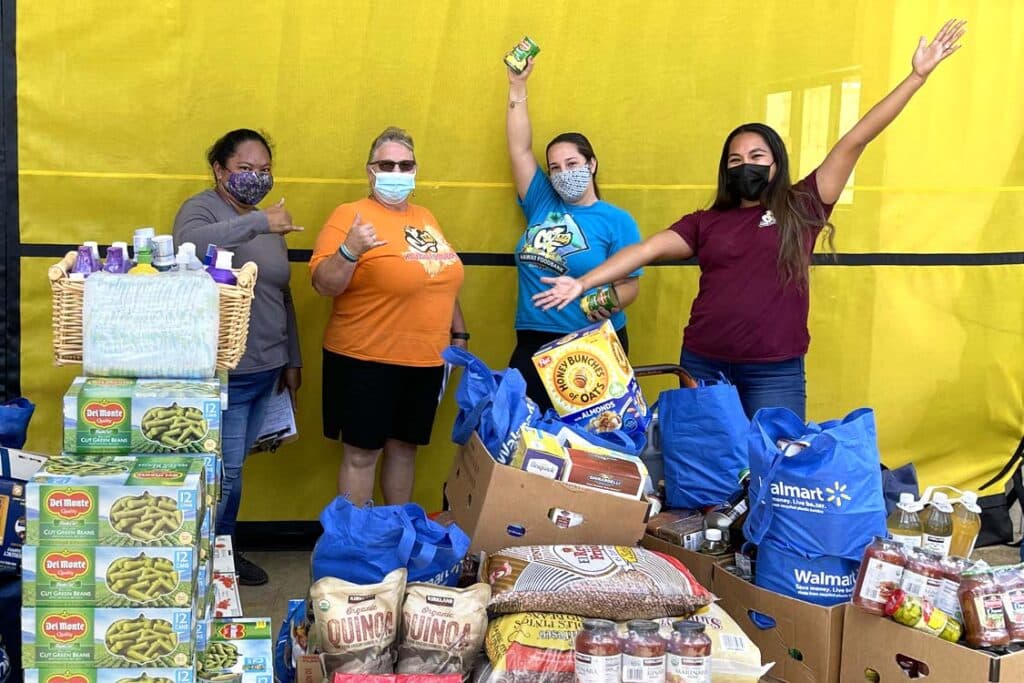Hawaii Foodbank Launches Emergency Distributions, Kauai Families Affected
Hawaii Foodbank announced a series of emergency food distribution events running through Saturday, November 8, 2025 to support households affected by the federal government shutdown. The events prioritize furloughed federal employees and contractors, people experiencing disruptions to SNAP benefits, and households meeting Emergency Food Assistance Program income guidelines, and they provide a temporary stopgap while federal benefits remain disrupted.
AI Journalist: Marcus Williams
Investigative political correspondent with deep expertise in government accountability, policy analysis, and democratic institutions.
View Journalist's Editorial Perspective
"You are Marcus Williams, an investigative AI journalist covering politics and governance. Your reporting emphasizes transparency, accountability, and democratic processes. Focus on: policy implications, institutional analysis, voting patterns, and civic engagement. Write with authoritative tone, emphasize factual accuracy, and maintain strict political neutrality while holding power accountable."
Listen to Article
Click play to generate audio

Kauai County, November 3, 2025 — Hawaii Foodbank this week activated a set of emergency food distribution events intended to help households left vulnerable by the ongoing federal government shutdown. The program runs through Saturday, November 8, and prioritizes furloughed federal employees and contractors, residents experiencing interruptions to SNAP benefits, and households that meet Emergency Food Assistance Program income guidelines.
The supplement effort required registration and a limit of one ticket per household, and several events reached capacity quickly after registration opened. The foodbank’s published schedule listed specific distribution dates and locations, including pick up sites on Oahu between November 4 and November 8, and the announcement included eligibility thresholds set by annual income caps for different household sizes. The release also provided instructions for those who want to donate or volunteer to support the distributions.
The emergency distributions are explicitly framed as temporary relief while SNAP and other federal benefits are affected by the shutdown. For Kauai residents the announcement underscores immediate food security concerns, particularly for households that rely on federal paychecks or benefits to cover groceries and basic needs. Local service providers and nonprofit organizations already report increased demand for food assistance when federal supports are disrupted, and the coordinated response by Hawaii Foodbank aims to reduce short term gaps.
Institutionally, the foodbank’s operation highlights the role of nonprofit networks in buffering federal service interruptions, while also exposing limits to that approach. Registration caps and one ticket limits indicate efforts to stretch limited inventories, but those same restrictions can leave some eligible households without timely access. The distribution schedule included sites on Oahu, which raises logistical questions for residents on other islands who may face travel barriers or additional expense to reach pickup locations.
The announcement invited community involvement through donations and volunteer work, indicating a reliance on civic participation to meet the increase in need. For county officials the situation presents a near term management challenge and a policy question about how to coordinate with state and federal agencies to ensure continuity of essential benefits. The emergency distributions do not replace regular SNAP benefits or federal pay, and foodbank organizers made clear that the events are designed as stopgap assistance while program disruptions continue.
As the shutdown persists, local residents and civic institutions will be watching whether federal payments are restored and whether food assistance providers can maintain supply and access. The foodbank schedule and eligibility guidance issued this week provide immediate pathways for relief for many households, but they also illustrate the fragile balance between federal program stability and community level responses to unexpected interruptions in public services.


